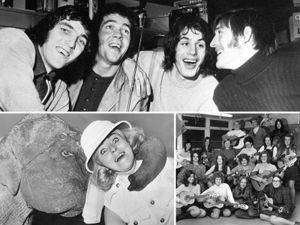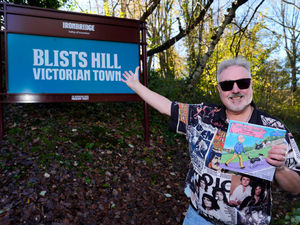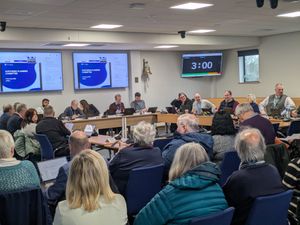Remembering James Eaton, Battle of Trafalgar hero from land-locked West Midlands
In a storm of shrapnel and splinters, they fought for their lives on decks slippery with sea and blood.
They fought hand-to-hand as musket balls fizzed around them, the screams and moans of the wounded and dying drowned by the deafening roar of cannons.
This was the horror of Trafalgar, a salt-seeped slugging match between 27 Royal Naval ships and a combined French and Spanish force of 33 vessels.
This was our greatest victory at sea, but it came at an immense cost. When the dreadful din had subsided off Cape Trafalgar, in the Atlantic Ocean, on October 21, 1805, 458 British seamen lay dead, including the battle’s architect, Horatio Nelson. More than 1,200 were wounded.
The French and Spanish had lost 4,395 men. The list of wounded nudged 2,550.
This was our greatest victory at sea – and men from the land-locked West Midlands were at the heart of the five-hour fury.
Research by the National Archives and National Maritime Museum revealed 124 of our Trafalgar heroes came from Warwickshire, 62 from Staffordshire.
This weekend we will pay tribute to the sacrifices made by our brave servicemen and women to protect these islands.
Locally, we will dwell upon the suffering of those who perished in the trenches of World War One, those who risked all in the seas, skies and in the rubble of World War Two.
On Remembrance Day we will forget the deeds of those who fought tooth and nail at Trafalgar.
Yet the band of “Land Lubbers” from our region include one man instrumental in the success, a man whose ship was first to face the enemy’s guns, a man who prevented flagship HMS Victory from being captured.
His headstone, at All Saints Church, West Bromwich, carries the epitaph: “He was a gallant officer and affectionate husband.”
James Eaton was more than that. He was a hero.
When we talk of Trafalgar, we talk of Nelson. In the West Midlands, Eaton should be mentioned in the same breath.

As local historian Matthew Ward put it: “I think James Eaton has been totally forgotten along with the contribution of people from what became the West Midlands at Trafalgar.
“People think about Portsmouth, Chatham and Devonport, but lots of people from our region were in Nelson’s fleet.”
As signal midshipman on HMS Temeraire, which sailed into the fray side-by-side with Victory, Eaton relayed to other ships Nelson’s famous battle cry: “England expects that every man will do his duty.”
Contrary to popular belief, that was not Nelson’s intended message. He wanted to tell his force: “England confides that every man will do his duty”. With the first shots only seconds away, Nelson was informed “confides” would be too long-winded for semaphore and was scrubbed in favour of “expects”.
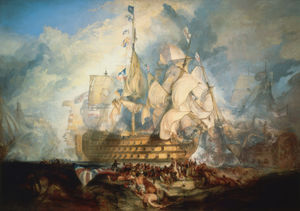
We have a detailed, enduring and accurate account of the battle thanks to Eaton, who lived at Hill House, West Bromwich. On his own ship, the Temeraire, 47 of the crew perished, 76 were wounded.
In his diary, Eaton wrote: “At daylight we saw the enemy fleet in the South East quarter consisting of 33 sails of the line, four frigates and two sloops.
“We cleared the ship for action and made all sail standing for the enemy fleet at half past 11. The ship on the starboard side engaging the Victory (the French vessel, Redoubtable) fell alongside of us.
“The yard arms locked and immediately after struck and was boarded by some of the officers and part of the crew of the Temeraire, at the same time being closely engaged with one of the enemy of the starboard side, a Spanish three deck ship (Santa Ana).”
It was the Temeraire that saved the day. As the Redoubtable’s French crew prepared to flood onto the Victory, it unleashed a withering barrage that killed 200 of the marauders.
Matthew Ward said: “Victory and the French Redoubtable became quickly locked together and there were lots of men firing at the deck, which killed Nelson.
“The French crew were about to board Victory and at that point there was a real risk they might have succeeded.
“The fighting Temeraire then came alongside the Redoubtable from the other side and fired a broadside that instantly killed around 200.”
In his book The Fighting Temeraire, Sam Willis wrote: “The Temeraire had followed the Victory as she smashed through the enemy’s line, engaged the largest ship in the world, saved Victory from capture and took two prizes, one of them the best trained ship in the entire French navy.”
Eaton’s ship was later immortalised by JMW Turner in his painting, The Fighting Temeraire.
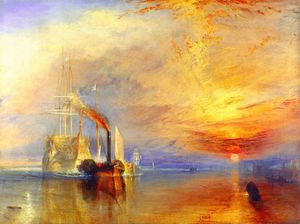
We know very little about Eaton, one of our region’s greatest heroes, and the most detailed background information I’ve found has been provided by westbromwichhistory.com.
Born in 1783, he lived a life crammed with adventure and in latter years earned handsomely from the region’s thriving coal industry.
He died on February 28, 1857.
Born in London, Eaton married his cousin, from Cannock, in 1816, and relocated here. Eaton moved into Hill House, Dagger Lane, in 1837 and died at the property. Legend has it Charles Dickens was once guest at the imposing abode.
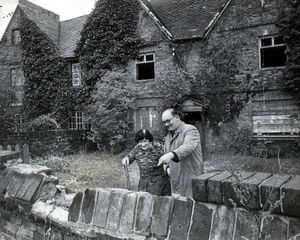
We don’t know if his wife survived him. We don’t know if the couple had children.
His career in the Royal Navy began in 1799 during the French Revolutionary Wars and, as a crew member of HMS Hannibal, was captured during the Battle of Algeciras Bay on July 5, 1801.
The date is unknown, but Eaton was returned to this country and was on board HMS Atalante in 1803, a 16 gun brig-sloop that enjoyed considerable success during the Napoleonic Wars.
Two years later, he was serving on HMS Temeraire as a signal midshipman, dubbed “Snotties” after Nelson admonished one for using his sleeve as a hankie.
Eaton faced death at Trafalgar, the now lieutenant would again stare it in the face two years later on HMS Lion when badly wounded while escorting a convoy out of China. In 1811, Eaton was in the thick of it as a mighty fleet helped capture Java from Dutch forces.
Eaton again showed his bravery in 1813 when, while serving on HMS Beaver, he rescued the crew of a Swedish vessel.
He rose to the rank of commander and left the Royal Navy in 1842 for a life much more ordinary. By then, outside interests were already providing a very healthy income.
Westbromwichhistory.com states: “Eaton became a successful businessman with interests in coalmines and land. In 1838, he was in partnership with William Salter and William Raybould when they took on a 21-year lease from Lord Dartmouth for the Heath Colliery.
“He was noted for being one of the better local employers, with an interest in the safety of his men, no doubt a legacy of his time in the navy.”
It is interesting that Birmingham was the first to erect a memorial to Nelson. West Midlands residents raised £2,500 for the landmark which was unveiled on October 25, 1809, and still stands proudly next to St Martin in the Bull Ring.
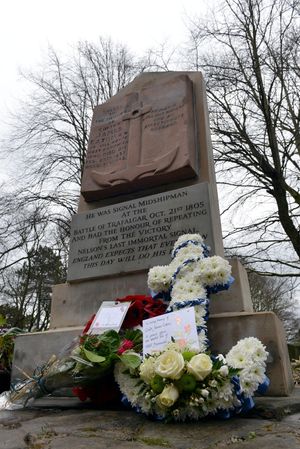
There was no such clamour for our very own Trafalgar fighters.
This weekend, we will stand in silent tribute to those who made the supreme sacrifice for our country.
In his poem “For the Fallen”, Laurence Binyon wrote: “Age shall not weary them, nor the year condemn.
“At the going down of the sun and in the morning
"We will remember them.”
Very few will spare a thought for our Trafalgar heroes.


